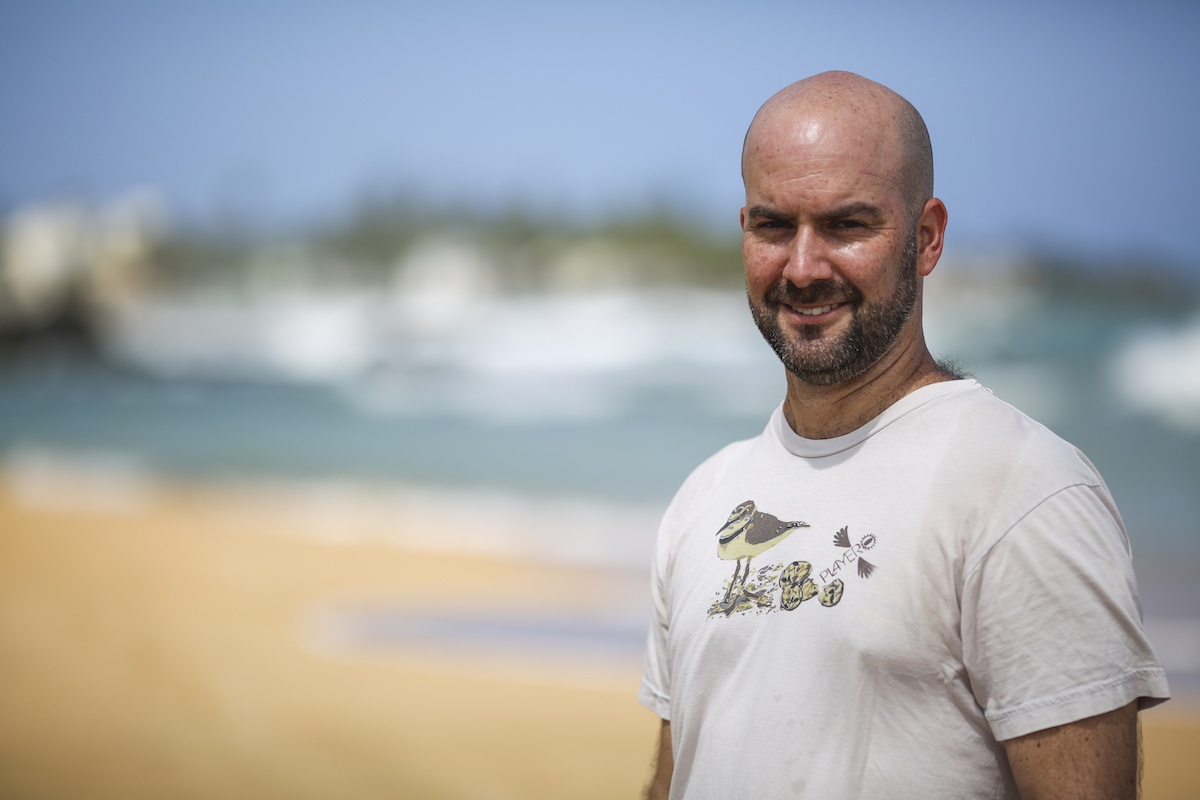(English Follows)
A los 8 años Luis Jorge Rivera Herrera presenció cuando las máquinas retroexcavadoras arrasaron la plantación de cocos que perteneció a su familia desde 1873. La propiedad fue expropiada por el gobierno para construir una planta de tratamiento de aguas residuales.
Como surfista y científico, Jorge Luis Rivera Herrera recorrió las playas y la costa del Corredor Ecológico Noreste de Puerto Rico, una zona de 3.000 acres de terreno de gran importancia biológica frente al mar.
Esta área alberga a más de 50 especies amenazadas o en peligro de extinción, como la tortuga laúd (tinglar le dicen en Puerto Rico), que anida y desova en estas playas. Además, su proximidad al Bosque Nacional El Yunque, una reserva de biosfera designada por la UNESCO, la hace única.
En 1999, los diarios anunciaron la construcción de dos enormes resorts de 3.500 habitaciones en el Corredor Ecológico del Noreste, desarrollos inmobiliarios residenciales, campos de golf y un centro comercial.
Pero Luis Jorge Rivera estaba decidido a no permitir que destruyeran este lugar. Organizó un grupo de voluntarios para oponerse públicamente a estos desarrollos y en el 2005 recibió la ayuda del Sierra Club, creando una Coalición para la defensa del Corredor Ecológico del Noreste.
Redactó un proyecto de ley para proteger el corredor como reserva natural pero fue bloqueado por un puñado de senadores. Eso no detuvo a Luis Jorge Rivera, quien se dedicó a conversar con la población de la zona explicándoles la importancia de proteger a las tortugas y el corredor, recibiendo un fuerte apoyo. Tanto que el asunto se volvió políticamente incómodo y el Corredor Ecológico se aprobó, como una reserva natural protegida mediante una orden ejecutiva.
La segunda victoria llegó en el 2012 cuando Luis Jorge Rivera y la coalición lograron que los legisladores aprobaran un nuevo proyecto de ley que designaba todas las tierras públicas del corredor como una reserva natural protegida. La movilización fue asombrosa y recibió un apoyo abrumador. Al ver en riesgo su reelección, el gobernador promulgó la ley. En el 2013, la presión de la coalición logró que el nuevo gobernador electo ampliara la reserva para incluir tierras de propiedad privada.
Su bravío esfuerzo en la protección y lucha por salvar el Corredor Ecológico del Noreste fue reconocido y Luis Jorge Rivera Herrera recibió el premio ambiental Goldman, el más alto galardón internacional del ambientalismo.
Rivera Herrera y sus colegas de la coalición ahora están organizando una campaña de recaudación de fondos para ayudar al gobierno a comprar las tierras privadas restantes en el corredor y un plan para desarrollar el corredor como un destino de ecoturismo, para el manejo y la restauración de la vida silvestre.
Luis Jorge Rivera Herrera, The Turtle Savior
When he was 8 years old Luis Jorge Rivera Herrera witnessed when the government backhoe loaders razed the coconut plantation that belonged to his family since 1873. The property was expropriated by the government to build a wastewater treatment plant.
As a surfer and scientist, Jorge Luis Rivera Herrera toured the beaches and coast of the Northeast Ecological Corridor of Puerto Rico, an area of 3,000 acres of land of great biological importance facing the sea.
This area is home to more than 50 threatened or endangered species, such as the leatherback turtle (tinglar as they call it in Puerto Rico), which nests and spawns on these beaches. In addition, its proximity to the El Yunque National Forest, a biosphere reserve designated by UNESCO, makes it unique.
In 1999, newspapers announced the construction of two huge 3,500-room resorts in the Northeast Ecological Corridor, residential real estate developments, golf courses and a shopping center.
But Luis Jorge Rivera was determined not to allow them to destroy this place. He organized a group of volunteers to publicly oppose these developments and in 2005 he received the help of the Sierra Club, creating a Coalition for the defense of the Northeast Ecological Corridor.
He wrote a bill to protect the corridor as a nature reserve but was blocked by a handful of senators. That did not stop Luis Jorge Rivera, who dedicated himself to talk with the population of the area explaining the importance of protecting the turtles and the corridor, receiving strong support. So much so that the matter became politically uncomfortable and the Ecological Corridor was approved, as a nature reserve protected by an executive order.
The second victory would come in 2012 when Luis Jorge Rivera and the coalition got legislators to pass a new bill that designated all public lands in the corridor as a protected nature reserve. The mobilization was amazing and received overwhelming support. Seeing his reelection at risk, the governor enacted the law. In April 2013, pressure from the coalition got the new elected governor to expand the reserve to include privately owned land.
His brave effort in the protection and struggle to save the Northeast Ecological Corridor was recognized and Luis Jorge Rivera Herrera received the Goldman environmental award, the highest international award for environmentalism.
Rivera Herrera and her coalition colleagues are now organizing a fundraising campaign to help the government buy the remaining private land in the corridor and a plan to develop the corridor as an ecotourism destination, for the management and restoration of wildlife.
